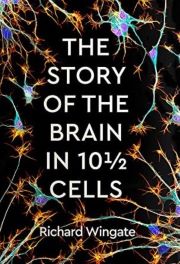The Story of the Brain in 10½ Cells

Richard Wingate
Wellcome Collection, £14.99
How many neurons are in a brain? Why do we draw neurons as we do in biology classes? What advances led to the discovery of axons? Richard Wingate weaves contemporary neurobiology with history of science, interspersed with biographic snippets, in this history of the brain, and answers many of these questions along the way.
Many biologists and biology teachers may know the names of the historical figures mentioned in the book only by reference to cells, organelles or techniques named after them. The brief biographical glimpses aid the historical narrative but also struck a chord with me, a biology teacher, illuminating the names of various cells and organelles I had been teaching for more than a decade without necessarily knowing the origin of their respective names and the associated scientists.
Wingate describes new ways of looking at the brain as an organ and of thinking about brain cells as the “physical manifestation of a fragment of thought”. Moved by Santiago Ramón y Cajal’s pioneering descriptions of early brain cell images in the late 1800s, Wingate describes his own first sight of a brain cell as “like rivers of molten metal being poured into a mould”.
Wingate provides a useful list of the key people in this history, which I found myself continually referring to throughout reading. He also includes insights into the development of scientific artefacts, such as classic diagrams in school textbooks of a ‘typical’ neuron. For Wingate, a hardening of such symbols, albeit used in the service of simplification for educational purposes, runs the risk of stopping further questioning and obscuring nuance. It is in discussions such as this, of the origin of textbook representation, that Wingate draws attention to the nature of science as a process done by humans.
This book has much to offer a lay reader with an interest in neuroscience or the history of biology. I think specialists would also appreciate the threading of historical context into the study of contemporary neurobiology.
Conor McCrory MRSB


